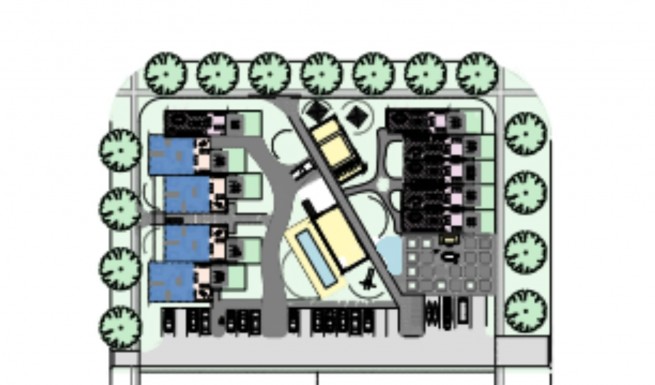
“By Design” column published in the Canberra Times on Sunday 19th and 26th April 2015
Why are you concerned about housing for older Canberrans?
It’s as though we’ve overlooked a whole chunk of our lifecycle – from the time when our kids leave home to the time we’re ready for institutionalised living: be it a retirement village or aged care facility. Far too many people remain in their oversized family home, unable to maintain their garden or keep up the maintenance because of the lack of affordable and attractive alternatives.
Isn’t the market responding adequately?
Not everyone wants to, or can afford to, live in an apartment. There are very few town houses being developed, secondary residences can’t be separately sold and dual occupancies are (thanks to Mr Fluffy) only just back on the radar. But these are largely speculative developments, built for profit and mostly unsuited to those of us still living active lives and requiring space for gardening, crafts, bicycles, trailer storage or space for a myriad of other hobbies or activities.
So how do we get more appropriate development?
We need to think more creatively about housing in general. Our planning policies, which are based on a rigid zoning system, do not create enough diversity of housing types within any particular district. Hence as our housing needs change we are forced to move away from our familiar neighbourhood and support networks. “Ageing in place” is a good policy but that “place” is not only our four walls but also our local community.
Have you got any suggestions for more innovative development?
Cohousing, which started in Scandinavia, is now burgeoning in the USA and becoming more popular in Australia, offers an alternative model. It’s typically multigenerational, although can be just for seniors. The closest we have in Canberra is the Urambi Village and Wybalena Grove communities in Kambah and Cook. A key to the success of cohousing is clustered carparking. They typically share productive gardens, laundries and drying areas, workshops and craft spaces. The larger schemes offer shared dining and communal kitchens. But everyone retains their own compact unit as well. Choice is the key to more communal living. A recent benchmark development for Canberra is Common Ground in Gungahlin, a government supported cohousing apartment complex for homeless and low-income tenants.
Are there smaller scale options?
Why not collaborate with a few friends and co-develop a suburban block for compact attached housing, or adapt an existing McMansion into two or three compact apartments with existing garden, garaging, studio and storage space shared by the residents. But we need the capacity to buy in and out of such developments.
So what needs to change to allow such development?
A review of the current zone-based planning system to allow for a more sophisticated and fine grained approach which recognises local topography, demographics, infrastructure, support facilities, proximity to public transport, etc. This should be part of an overall long term planning strategy to increase density and diversity across the city. At the moment we seem to have disparate development proposals such as that currently proposed for Yarralumla which are predictably opposed by resident action groups. We need a long term comprehensive strategy which has wider consensus across the whole Canberra community.
How is cohousing different from normal townhouse developments?
The main difference is that some space is shared: this could include vegetable gardens, laundries, drying areas and workshops. But everyone owns their own self-contained unit as well.
Is it exclusively for older Canberrans?
No, it is multigenerational and suits anyone interested in a more social way of living, which makes better use of land, and who want to spend less on their housing. Although, I think it is a particularly attractive option to older people wanting to downsize and remain in their community.
What’s wrong with the alternative on offer?
Many of us don’t want or can’t afford to live in an apartment. There are very few town houses being developed, secondary residences can’t be separately sold and dual occupancies are (thanks to Mr Fluffy) only just back on the radar. But these are largely speculative developments, and mostly unsuited to those of us still living active lives and requiring space for gardening, crafts, bicycles, trailer storage or space for a myriad of other hobbies or activities.
So what’s the key to a well-designed cohousing community?
Shared carparking to allow more efficient use of land and careful design of pathways and siting of shared facilities to encourage interaction and yet afford privacy to each unit. Each resident needs to be able to buy and sell their unit like any other strata -titled development.
Is there an optimal size for cohousing?
Yes and no. A larger development of say 30 units allows for more elaborate shared facilities such as communal kitchens and dining areas, tennis court, etc. but finding sufficient land means they’re not often where people want to live. More boutique developments of say two to five units could be built on adjoining blocks within existing neighbourhoods.
Are there any good examples in Canberra?
Yes, on the smaller scale there are quite a few examples of two homes on the one block with shared outdoor and workshop space. On the larger scale, the closest we have in Canberra is the Urambi Village and Wybalena Grove communities in Kambah and Cook. They are characterised by compact attached houses, clustered carparks and large useable open spaces, in a bushland setting. They hold their value very well.
So why don’t we see more of this kind of development?
Many reasons: Mainly it’s the rigid planning system which prohibits this kind of development in established residential zones, which therefore lack a diversity of housing types. It’s also the banks and their valuers who are reluctant to lend to anything moderately innovative. Thirdly, it’s all the bad press that higher density attracts because so much of it has been so badly done in the past.
Anything positive?
The secondary residence policy has been a great initiative which allows for more adaptable use of existing blocks to support a range of social and/or economic objectives. The drawback is that separate titling is not permitted which dissuades many people from this pursuing this option.
So any suggestions for the future?
We need to think more creatively about housing in general. A review of the current zone-based planning system to allow for a more sophisticated and fine grained approach which recognises local topography, demographics, infrastructure, support facilities, proximity to public transport, etc. This should be part of an overall long term planning strategy to create a more compact, sustainable city. At the moment we seem to have disparate development proposals such as that currently proposed for Yarralumla which are predictably opposed by resident action groups. We need a long term comprehensive strategy which has wider consensus across the whole Canberra community.


